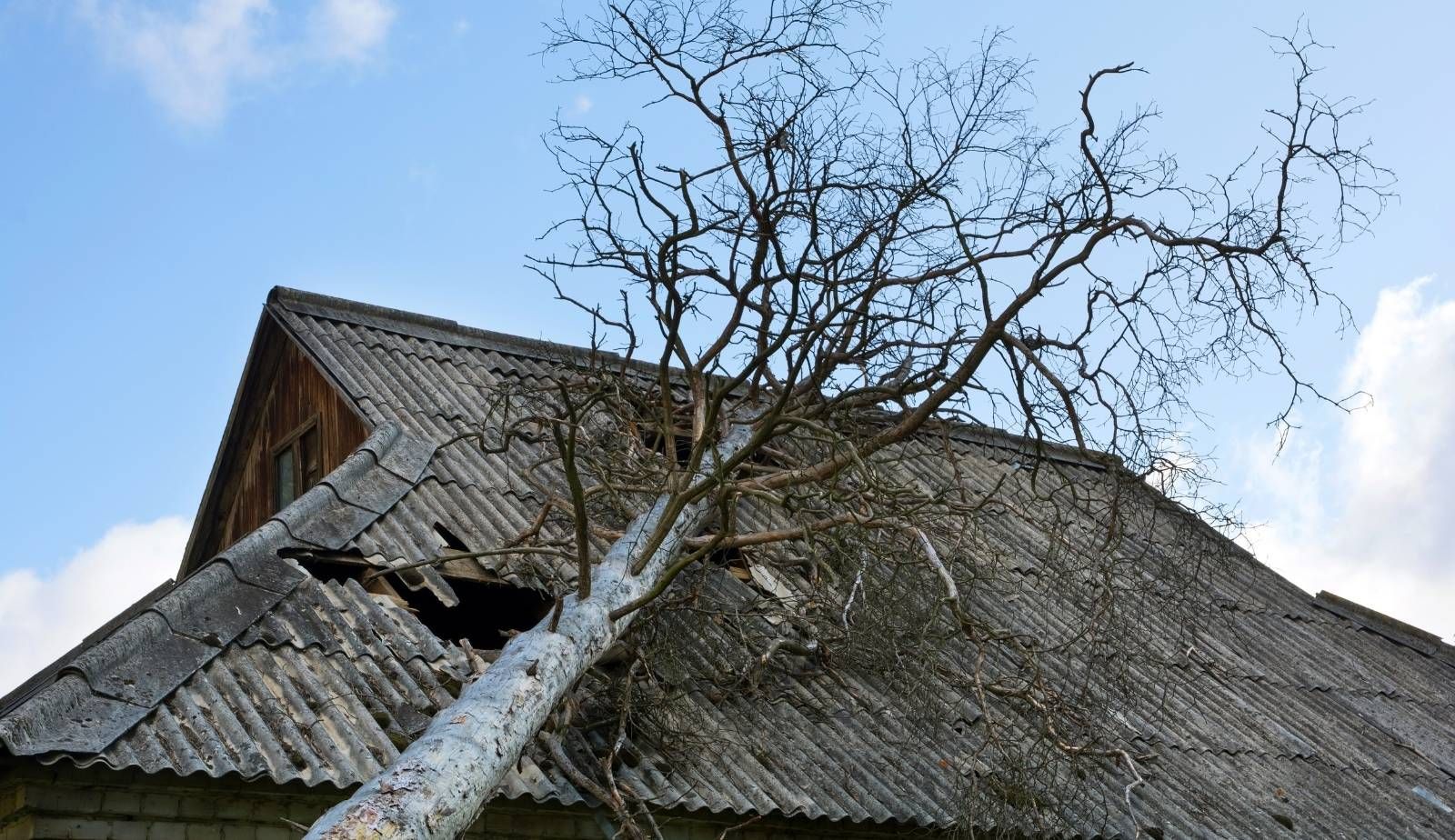Insurance and Water Damage: Expert Guidance on Claims, Documentation, and Coverage Maximization
Insurance claims related to water damage can often be complex and daunting. Having a clear understanding of the claims process is essential for any homeowner facing this issue. Documenting damage meticulously, maintaining effective communication with adjusters, and knowing how to maximize compensation are vital steps in navigating the challenges associated with water damage claims.
Drymax emphasizes the importance of taking detailed photographs and notes immediately after discovering water damage. This information will serve as crucial evidence when filing a claim. Understanding the specific terms of the insurance policy can also prevent misunderstandings and ensure that the homeowner is fully informed about what is covered.
Clear communication with insurance adjusters can significantly influence the outcome of a claim. Homeowners should be prepared to articulate the extent of the damage and provide all necessary documentation promptly. By following these strategies, individuals can enhance their chances of receiving the compensation they deserve for their water damage claims.
Understanding Your Insurance Policy
Understanding an insurance policy is crucial for homeowners facing water damage. By grasping policy basics, coverage specifics, and flood-related considerations, individuals can navigate claims more effectively.
Insurance Policy Basics
An insurance policy serves as a contract between the homeowner and the insurance company. It outlines the coverage, exclusions, and limitations that apply in the event of a claim. Homeowners need to read the policy carefully, as it includes essential details about the protection offered.
Key components include:
- Premiums: The amount paid for coverage.
- Deductibles: The out-of-pocket cost before insurance kicks in.
- Coverage Limits: The maximum amount the insurer will pay for a claim.
Understanding these elements helps in making informed decisions during the claims process.
Homeowners Insurance Coverage
Homeowners insurance typically covers various types of water damage, but there are significant exclusions. Standard policies generally cover damage from internal sources, such as burst pipes or heavy rain, but may exclude flood-related damage.
Homeowners should be aware of:
- Exclusions: Events not covered under the policy, such as neglect or wear and tear.
- Limitations: Specific conditions under which coverage is provided.
- Additional endorsements: Policies may offer optional coverage for specific risks beyond standard protections.
Recognizing these factors can aid in maximizing claims when water damage occurs.
Flood Insurance Considerations
Flood insurance is a separate coverage not typically included in standard homeowners policies. It is essential for homeowners, especially those in flood-prone areas. The National Flood Insurance Program (NFIP) provides this coverage through participating insurers.
When considering flood insurance, homeowners should note:
- Policy Options: Different coverage levels are available depending on property location.
- Waiting Periods: Policies often have a 30-day waiting period before coverage becomes effective.
- Coverage Limits: Standard limits may not fully cover extensive damages caused by flooding.
Understanding flood insurance specifics is vital for comprehensive protection against water damage.

Types and Causes of Water Damage
Understanding the types and causes of water damage is essential for homeowners. Various sources can lead to significant property loss, and recognizing the difference between sudden and gradual damage can help in effectively addressing claims.
Common Sources of Water Damage
Water damage can arise from multiple sources. Some of the most prevalent causes include:
- Burst Pipes: Sudden pipe failures can result in substantial flooding in a short period. This is often due to age, corrosion, or changes in temperature.
- Flooding: Heavy rainfall or natural disasters can inundate properties, causing extensive damage. Standard homeowners' insurance usually does not cover this unless additional flood insurance is obtained.
- Roof Leaks: Water can seep in through damaged or missing shingles, leading to deteriorating ceilings and walls.
- Plumbing Issues: Common household plumbing failures, including faulty fixtures and poor connections, can contribute significant water damage.
- Accidental Water Damage: Mistakes like leaving a sink running or a washing machine malfunctioning can result in unexpected leaks.
- Wind-Driven Rain: In certain storms, rain can penetrate through windows or doors, exacerbating water intrusion.
Gradual vs Sudden Damage
Differentiating between gradual and sudden water damage is crucial for claims processing.
- Sudden Damage: This type occurs unexpectedly, such as a burst pipe. Homeowners typically have a more straightforward claims process for sudden incidents as they contrast sharply with normal wear and tear.
- Gradual Damage: Issues like seepage from prolonged leaks or roof leaks fall into this category. Gradual damage can be more complex to prove since insurance policies may not cover long-term damages resulting from neglect or lack of maintenance.
Understanding these distinctions can significantly impact the success of an insurance claim.
Initial Steps After Discovering Water Damage
Upon discovering water damage, quick and effective action is essential. Proper assessment and proactive mitigation efforts can significantly impact the recovery process.
Assess the Damage
The first step involves evaluating the extent of the water intrusion. Inspect affected areas thoroughly to identify the source of water, whether from leaks, flooding, or broken pipes.
Taking clear and detailed photographs is critical. These serve as visual evidence for the insurance claim process. Make notes about the locations and severity of water damage, including any structural issues.
Homeowners should also check for damage beyond what is immediately visible, such as behind walls or under flooring. This comprehensive approach ensures that nothing is overlooked when filing a claim with the insurance company.
Mitigation Efforts
After assessing the damage, taking steps to prevent further water damage is crucial. Homeowners should immediately address the water source by shutting off the plumbing or other relevant systems.
Next, begin the drying process. Open windows, remove wet carpets, and use fans or dehumidifiers to speed up evaporation. Rapid drying can help minimize the extent of damage and mold growth.
If necessary, contacting professionals for restoration services can further reduce damage. Document all actions taken in this phase, as it may be relevant during the insurance claim process. By doing this, they not only protect their property but also strengthen their case with the insurance company.
Documenting the Damage
Accurate documentation is critical when dealing with water damage claims. By creating a detailed inventory and gathering evidence of the damage, homeowners can strengthen their position with insurance adjusters and improve the likelihood of a favorable outcome.
Creating a Detailed Inventory
A comprehensive home inventory is essential for filing an insurance claim. Homeowners should list all damaged items, including furniture, appliances, and personal belongings. This inventory should include:
- Descriptions of each item: Clearly define the type and function of each object.
- Purchase dates: Note when each item was acquired to establish its value.
- Replacement costs: Research current prices for similar items to support the claim.
In addition to the list, the inventory should be organized by room, making it easier for adjusters to evaluate the extent of the damage. Keeping a digital or physical copy of this inventory ensures that critical information is not lost during the claims process.
Gathering Evidence of Damage
Visual documentation significantly aids in substantiating water damage claims. Homeowners should take detailed photographs and videos, capturing various angles of the affected areas. Key aspects to focus on include:
- Extent of damage: Photograph major affected areas, like walls, floors, and ceilings.
- Close-ups of specific damage: Capture details, such as mold or warped materials.
- Contextual images: Show surrounding areas to illustrate how water infiltrated the space.
Dating and timestamping all images is crucial for a more accurate timeline of the incident. Combining visual evidence with the written inventory creates a comprehensive case, allowing homeowners to effectively communicate the scope of damage to insurance adjusters.

Filing Your Insurance Claim
Filing an insurance claim for water damage requires careful attention to detail and clear communication with the insurance provider. This section outlines the essential steps to take and the strategies for effective communication during the claims process.
Steps to File the Claim
- Document the Damage: It is crucial to thoroughly document all affected areas. Take clear photographs and videos of the damage, noting the date and time of discovery. This visual evidence will support the home insurance claim.
- Review Your Policy: Understanding the specifics of the insurance policy is vital. Homeowners should familiarize themselves with coverage limits, deductibles, and any exclusions related to water damage.
- Notify the Insurance Provider: Contact the insurance company as soon as possible. Provide a detailed account of the incident, specifying the cause of the damage, whether it’s from a flood or a plumbing issue.
- Complete the Claim Form: Fill out the necessary claim forms accurately. Include all documentation and evidence gathered. Incomplete forms can delay the claim process.
- Follow Up: After submitting the claim, maintain communication with the insurance provider. Doing so ensures the claim does not stall and questions get answered promptly.
Communicating with Your Insurance Company
Effective communication with the insurance company is key to navigating the claims process. Here are important tips:
- Stay Organized: Keep records of all correspondence, including names, dates, and details of conversations. This provides a clear reference point throughout the process.
- Be Clear and Concise: When discussing the claim, accurately describe the incident and the extent of the damage. Avoid vague language to ensure the adjuster understands the situation.
- Request Updates: Regularly ask for updates on the claim’s status. Staying informed helps identify potential delays and addresses issues as they arise.
- Understand Adjuster Reports: Pay attention to the adjuster’s assessment. If needed, address discrepancies by providing more evidence or re-explaining the situation.
Following these steps and maintaining clear communication can significantly enhance the chances of a successful claim related to water damage.
Working with Adjusters and Experts
Navigating the complexities of insurance claims for water damage requires effective communication and expert involvement. Understanding the roles of insurance adjusters, knowing when to hire public adjusters, and engaging restoration experts are key components of maximizing claims.
The Role of Insurance Adjusters
Insurance adjusters are professionals tasked with assessing the extent of damage and determining the amount payable on a claim. They evaluate the damage caused by water intrusion and analyze policy specifics to provide an accurate assessment.
To effectively work with an adjuster, it’s crucial to document all damage thoroughly. Taking detailed photographs and keeping records of communication can strengthen the case. The adjuster will also verify repair estimates from contractors, so providing these promptly can facilitate the claims process. Clear communication can ensure that nothing is overlooked.
Hiring a Public Adjuster
When the situation is particularly complex, hiring a public adjuster can be beneficial. Public adjusters work on behalf of the policyholder, unlike insurance adjusters who represent the insurer. They possess specialized knowledge in claim negotiation and can help maximize the settlement amount.
A public adjuster assesses damage, estimates repair costs, and handles all communications with the insurance company. They can also identify areas that require mold remediation or restoration that may not be evident. Investing in their services can provide peace of mind and potentially result in a higher claim payout.
Engaging Restoration Experts
Restoration experts play a critical role in the recovery process post-water damage. These professionals are skilled in water damage restoration and mold remediation, ensuring that properties are not only repaired but also made safe and habitable.
When engaging restoration experts, obtaining detailed repair estimates is essential. This documentation will be necessary for claim submissions. These experts can provide insight into the extent of damage and necessary repairs. Their assessments can support the policyholder’s claim, helping to substantiate the financial needs associated with the water damage.
Settling Your Water Damage Claims
Navigating the settlement process for water damage claims requires careful attention to detail. Understanding compensation structures and knowing how to effectively handle claim denials can significantly impact the outcome.
Understanding Compensation and Reimbursement
When settling water damage claims, it’s essential to know how compensation works. Insurers often provide reimbursement based on the actual cash value (ACV) or replacement cost value (RCV). ACV considers depreciation, while RCV replaces damaged items at today’s prices.
Homeowners need to account for applicable deductibles. This is the amount subtracted from the total payout. For instance, if the total repair estimate is $10,000 with a $1,000 deductible, the insurance payout would be $9,000.
Repair estimates should be thorough. Including invoices and detailed documentation strengthens the claim. If multiple repairs are necessary, listing them can help avoid disputes. It’s also important to be aware of policy limits to prevent unexpected shortfalls.
Dealing with Claim Denials
Claim denials can occur for various reasons, including negligence or confusion regarding accidental damage. Reviewing the denial letter is crucial. It usually details why the claim was not approved.
If a claim is denied, the first step is to address the issues mentioned. Gathering additional evidence to support the case can strengthen the appeal. This might include further repair estimates or photographs of the damage.
Communication is key when working with the insurance carrier. Being clear and concise in discussions can mitigate misunderstandings. If necessary, enlisting the services of a claims adjuster or legal representation might be beneficial.
Staying informed about rights under the policy can empower homeowners to effectively challenge a denial, making it possible to achieve fair compensation.

Frequently Asked Questions
Navigating the process of filing water damage insurance claims can raise several questions. This section addresses key inquiries that homeowners often have, providing specific advice and details to better manage these claims.
How do I document water damage to ensure a successful insurance claim?
Documenting water damage involves taking thorough photographs of the affected areas, including close-ups of any visible damage. Homeowners should also record the date of the incident and note any actions taken, such as temporary repairs or mitigation efforts.
Can you provide tips for maximizing an insurance claim for water damage?
To maximize an insurance claim, it is essential to gather all relevant documentation, including repair estimates and records of communication with contractors. Additionally, maintaining an organized file of receipts for any emergency repairs made can strengthen the claim.
What steps should I take when filing an insurance claim for water damage to my kitchen?
When filing a claim for water damage in the kitchen, the first step is to notify the insurance company promptly. Homeowners should document the damage thoroughly, including its source, and keep records of any repairs and communications related to the claim.
In what scenarios could an insurance claim for water damage be denied?
Insurance claims for water damage might be denied if the damage is due to neglect or lack of maintenance, such as failing to fix a leaking roof. Policies may also exclude certain types of water damage, like flooding, unless additional coverage is purchased.
What are the common coverages provided for water damage under home insurance policies?
Most homeowner's insurance policies cover sudden and accidental water damage, such as that caused by burst pipes or malfunctioning appliances. Coverage may also extend to damage from specific weather-related events, but it often excludes flooding unless specified.
How should I communicate with an insurance adjuster regarding water damage to my property?
Effective communication with an insurance adjuster involves being clear and concise. Homeowners should provide all documentation related to the claim and be prepared to answer questions about the circumstances of the water damage and any repairs made.
You might also like
DryMax Restoration Blogs




